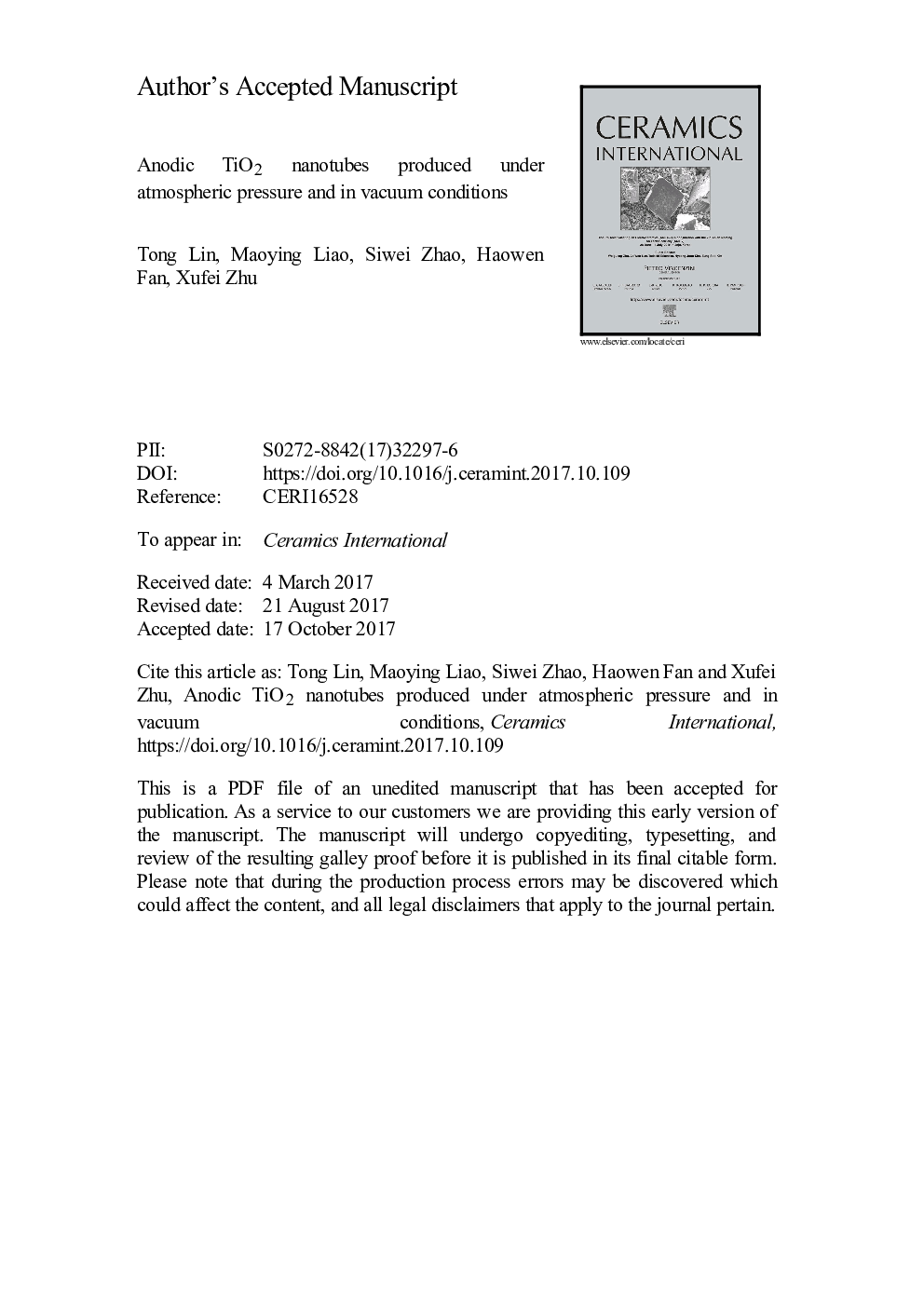| Article ID | Journal | Published Year | Pages | File Type |
|---|---|---|---|---|
| 7889043 | Ceramics International | 2018 | 22 Pages |
Abstract
Throughout the intense research of anodic TiO2 nanotubes (ATNTs), the effect of ambient pressure is usually ignored. In this article, Ti foils were potentiostatically anodized both under atmospheric pressure (0.1Â MPa) and in vacuum (0.005Â MPa). The anodizing current and nanotube length in vacuum are larger than those under atmospheric pressure, which cannot be explained by field-assisted dissolution theory. According to the oxygen bubble mould and Nernst equation, we attribute the higher current in vacuum to the faster gas evolution and oxide growth under narrower electrochemical potential gaps. By mathematically separating the total current into ionic and electronic parts, the faster oxide growth is further confirmed. The different nanotube lengths are due to various electric charge transported during anodization.
Keywords
Related Topics
Physical Sciences and Engineering
Materials Science
Ceramics and Composites
Authors
Tong Lin, Maoying Liao, Siwei Zhao, Haowen Fan, Xufei Zhu,
